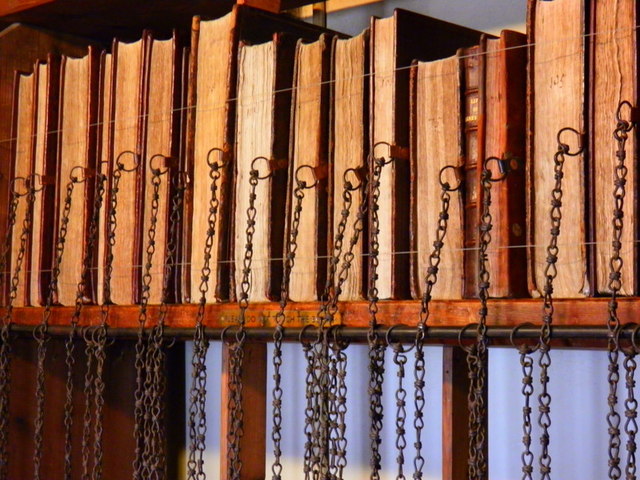By April Stevens (W&M Managing Editor)
It is an undisputed fact that the written word and its many innovations and incarnations have repeatedly changed the course of history. So today’s Cabinet of Curiosities is devoted to the history of the written word in all its forms from the handwritten letter, to the printed book, and even the modern text message.
From Stone Mail to Snail Mail
 If you had to carve your letters in stone, you would probably be a little more selective in what messages you sent. Imagine how angry the writer of the world’s oldest customer complaint letter must have been! Dating from 1750 BC, the complaint carved in stone came form an unsatisfied copper ore customer named Nanni who had sent messengers through a war zone looking for a refund. Now that’s one dissatisfied client!
If you had to carve your letters in stone, you would probably be a little more selective in what messages you sent. Imagine how angry the writer of the world’s oldest customer complaint letter must have been! Dating from 1750 BC, the complaint carved in stone came form an unsatisfied copper ore customer named Nanni who had sent messengers through a war zone looking for a refund. Now that’s one dissatisfied client!
What can rival a customer complaint etched in stone? A letter from the enemy might give it a run for its money. The letter in question is probably not what you are imagining. In 1922, the grieving mother of a fallen WWI pilot, Sallie Maxwell Bennett, received a letter from a German officer who had fought against her son. The unexpected letter recounts Louis Bennett’s extraordinary bravery and skill up until his death, and expresses uncommon admiration from his former foe.
 Like many historians, you may wonder how today’s prevalent yet abridged emails and text messages will change how future generations understand our history. Playing on this idea, The New Yorker has imagined how some famous historical exchanges might have been different with smartphones. If you’re in the mood for a chuckle take a look at these humorous historical rewrites, such as how Paul Revere’s message might have gone wrong in the texting era.
Like many historians, you may wonder how today’s prevalent yet abridged emails and text messages will change how future generations understand our history. Playing on this idea, The New Yorker has imagined how some famous historical exchanges might have been different with smartphones. If you’re in the mood for a chuckle take a look at these humorous historical rewrites, such as how Paul Revere’s message might have gone wrong in the texting era.
The Bastion of the Written Word
Humankind has recognized the importance of writing since early on, and the need to protect and disseminate it. Hence, the library was born. Bibliophiles worry that the library is an institution doomed by the digital age, but where did libraries come from in the first place? A new tongue-in-cheek article 8 Weird Facts From the History of the Library gives us some highlights of the development of the library. For example, did you know the first public library was probably started by “one of Plato’s trashier students” (their words, not ours!).
 Once you open a resource to the public, one of the chief concerns is how to protect it. Today we have barcodes and RFID tags, but how did they protect the precious commodity of books in the Middle Ages? The title of Medieval Books recent article Chain, Chest, Curse: Combatting Book Theft in Medieval Times gives you an idea. Books were so valued and so expensive to replace, that Medieval libraries literally had books chained to the shelves, or chests. However, the curses against thieves written inside many tomes served as a second line of defense.
Once you open a resource to the public, one of the chief concerns is how to protect it. Today we have barcodes and RFID tags, but how did they protect the precious commodity of books in the Middle Ages? The title of Medieval Books recent article Chain, Chest, Curse: Combatting Book Theft in Medieval Times gives you an idea. Books were so valued and so expensive to replace, that Medieval libraries literally had books chained to the shelves, or chests. However, the curses against thieves written inside many tomes served as a second line of defense.
If you have enjoyed reading a bit about the history of the written word, check out some similar recent posts on Wonders & Marvels:

